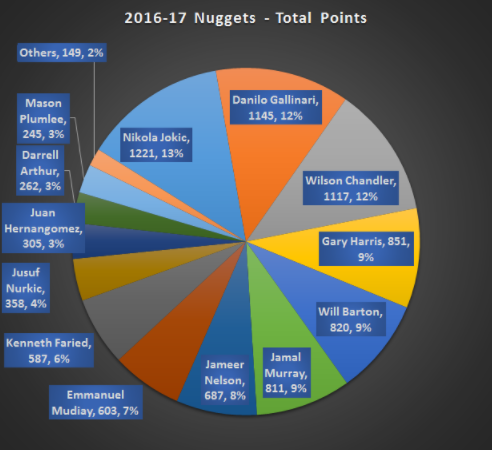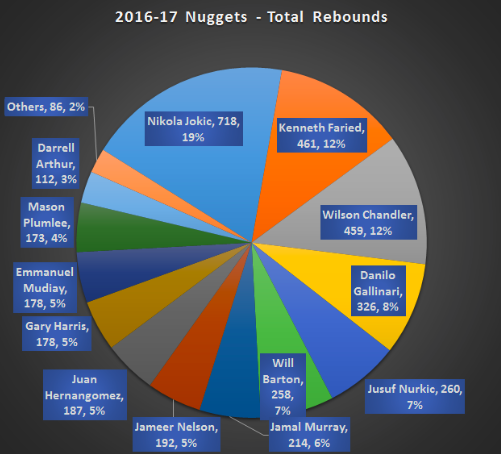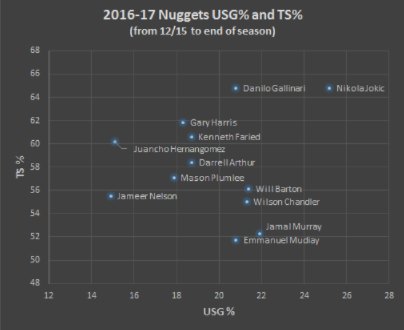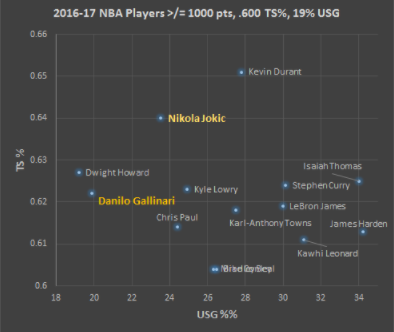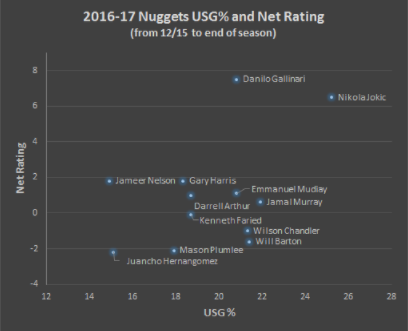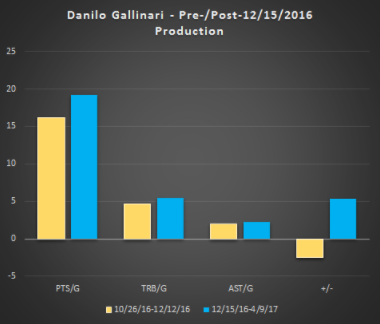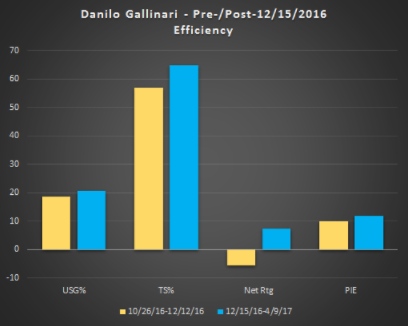© 2025 ALLCITY Network Inc.
All rights reserved.

Most people who follow the Denver Nuggets have long been expecting Danilo Gallinari to opt out of the final year of his contract this summer to test the waters of free agency for the first time in his career. For months everything seemed to be pointing in that direction, and so it was little surprise when The Vertical’s Adrian Wojnarowski recently reported that Gallinari had indeed decided to become an unrestricted free agent.
The Nuggets missed their chance to trade Gallinari for any return assets (something I advocated for leading up to this season’s trade deadline), and the high price that Gallinari is likely to command on the market could very well mean he will end up leaving for a different team, with Denver losing him for nothing. Despite how much mutual respect and appreciation has been expressed between general manager Tim Connelly’s front office and Gallinari, it seems improbable that if his price tag ventures much above $20 million per season that Denver would be willing to invest that much in him given his age and injury history.
It is certainly debatable, especially regarding the team’s longer-term financial flexibility, whether it would be better for the Nuggets to re-sign Gallinari, and if so at what cost, or to let him walk away. But even if he doesn’t fit the timeline of the Nuggets’ blossoming core of young players, he was arguably Denver’s second best player after Nikola Jokic this season, and the void in production left behind if he departs will be appreciably difficult to fill.
Production
Considering outright production, first of all, Gallinari led the Nuggets in points per game with 18.2, and despite missing 19 games due to injury, still scored the second-most points for the team overall:
Even if the so-far impressive development of Nikola Jokic, Gary Harris, Jamal Murray, and Juancho Hernangomez goes swimmingly, Gallinari’s scoring output would be a big chunk of lost real estate to cover, which could be even further compounded if Wilson Chandler or Will Barton were to be traded.
Things are a little less worrisome on the glass, where Gallo’s 5.2 rebounds per game were good for just sixth on the team. He did, however, have the fourth highest outright rebound total due partly to logging the second-most minutes on the Nuggets. And while rebounds may not be Gallinari’s forte, his combination of solid outputs in both scoring and rebounding is not necessarily easy – or cheap – to come by:
But perhaps more importantly, Gallinari quietly had one of the most efficient seasons of his career. This went mostly under that radar with all the hype around Jokic, which as well-deserved as it was, eclipsed the fact that the 29-year-old contributions were arguably nearly as valuable, if less surprising for being a veteran.
Efficiency
In the 2016-17 season, Gallinari racked up career bests in true shooting percentage and offensive rating, while tallying second-bests in points per possession and player efficiency rating. He truly had not a good, but a great season, although it may have gone somewhat underappreciated in the midst of the excitement generated by Jokic and Murray.
If we look at Nuggets players’ true shooting percentage in the context of usage rate, it becomes clear that Gallo, like Jokic, markedly separated himself from the pack in terms of scoring efficiency. The following chart shows the relation of usage rate to true shooting percentage from December 15, when Jokic took the helm as starting center (and, as every Nuggets fan understands, their season truly began), through the end of the season:
To put this into context, there were a total of just 14 NBA players in the 2016-17 season with greater than 1000 total points, a .600 true shooting percentage, and a 19 percent usage rate, putting Jokic – and yes, Gallinari – in some fairly elite company:
To drive the point home a bit further, Gallinari’s position alongside Jokic as one of the team’s two most efficient standouts is even more pronounced when viewed through the metrics of net rating and usage rate, again from Dec. 15 onward:
So Gallinari has not just been putting up impressive numbers, he has been doing so as efficiently as he ever has in his career. This, of course, may have something to do with the fact that he played so many of his minutes alongside Jokic, who makes nearly everyone better he plays with, and that brings us to one caveat.
A Possible Counterpoint: The Jokic Effect
Could a solid case be made that Gallinari’s great season is largely a function of “The Jokic Effect” – in which the young center makes all the players around him better, and perhaps better than they could ever be in other contexts?
There is certainly a strong positive correlation between the December 15 dawn of the Jokic Era and a sharp upswing in Gallo’s production and efficiency:
After Jokic was promoted to the starting center position, Gallinari improved his scoring by three points per game, with less pronounced increases in rebounding and assists.
Along with his scoring output, his scoring efficiency also took a major leap up from a .571 true shooting percentage to .648. Perhaps even more remarkably – though this reflects beyond Gallo to the team as a whole – his net rating skyrocketed from -5.5 to +7.5.
This at least raises the possibility that the Jokic Effect may have somewhat artificially inflated Gallinari’s numbers, and that by extension, any other reasonably good small forward who was plugged and played into the same slot would likewise see a similar bump in efficiency.
One problem with this, however, is that Gallinari’s post-Dec. 15 production was largely in line with previous career bests, so he did not perform outside the bounds of what would reasonably be expected of him if he were playing at his best.
Secondly, Gallinari and Jokic developed a chemistry together which legitimately thrived, especially toward the end of the season, and the Italian’s strengths seem to complement Jokic’s exceedingly well. And there is no guarantee that a potential Gallinari replacement could develop a similar rapport.
Tough Decisions Ahead
Connelly has a lot of reasons to want to keep Gallinari around, especially if the Nuggets’ goal next season is to make the playoffs – and it almost certainly is. But balancing out the short-term benefits – including simply not slipping next season – with the long-term risks of bloating the payroll to the extent that retaining their young players currently on rookie contracts will be problematic, will not be an easy juggling act.
And purveying the small forward free agent pool, the players who, unlike Kevin Durant or Gordon Hayward, may actually be attainable for the Nuggets – guys like P.J. Tucker, James Johnson, and Joe Ingles – would be attempting to step into shoes that will be extremely hard fill.
But after his impressive season, it seems more and more likely now that Gallinari’s value on the market will land him a salary that will outprice the Nuggets, and find them struggling to replace that Gallo-shaped hole.
Comments
Share your thoughts
Join the conversation




